The Making Of Namak Haraam: How "Flop Actor" Amitabh Bachchan Stole The Show From "Superstar" Rajesh Khanna
When the shooting for Namak Haraam had begun, Rajesh Khanna was the superstar, and Amitabh was considered a flop actor
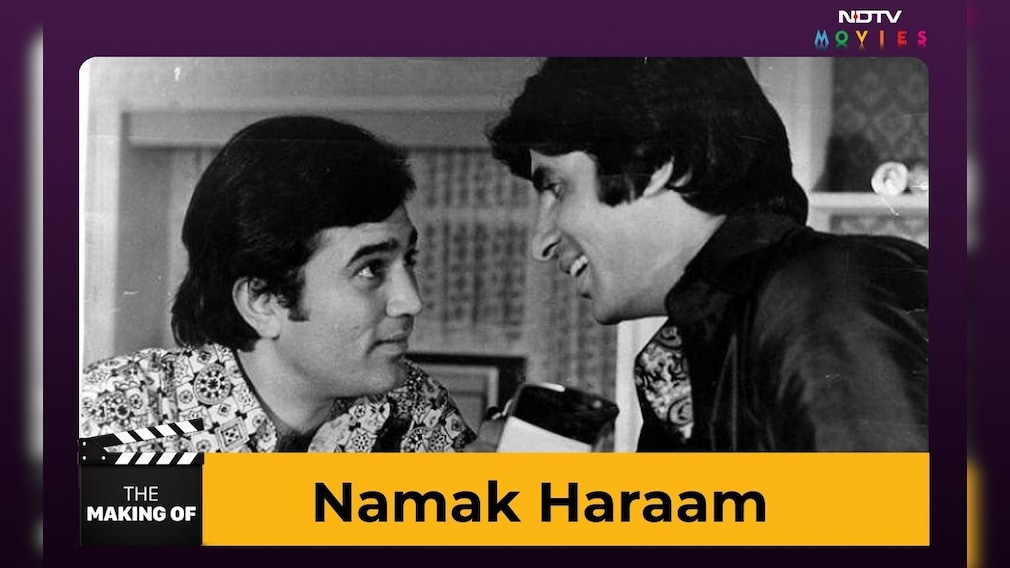
In the winter of 1973, Hrishikesh Mukherjee's Namak Haraam arrived, and it was unlike anything he had ever made. The filmmaker celebrated for warm comedies and gentle family dramas turned his lens to politics, power, and class conflict. But what began as a Rajesh Khanna starrer ended up much more: a marker of change in Bollywood itself. Today, it is remembered as a clash of titans with Rajesh Khanna, the reigning superstar, facing Amitabh Bachchan, the rising force.
Namak Haraam was an adaptation of the 1964 Hollywood classic Becket. At its core, it carried a powerful idea- the clash between capitalism and socialism, and how that struggle corrodes friendship, morality, and human bonds. Where Becket had Richard Burton and Peter O'Toole, Hrishikesh Mukherjee cast his own heavyweight pair: Rajesh Khanna and Amitabh Bachchan, reunited after Anand.
The Nation Was Under Superstar Rajesh Khanna's Spell
When filming began, Rajesh Khanna was still the phenomenon, the undisputed star. Zanjeer hadn't been released, but Amitabh's brooding intensity in Anand had already turned heads, and with several major projects lined up, he was fast emerging as one to watch. In a recent interview, actor Raza Murad, who played a crucial role in Namak Haraam described the hysteria surrounding Khanna at the time. On the first day of the shoot, he arrived to see nearly 2,000 girls crowding the set just to catch a glimpse of the superstar. "There was a hysteria. The whole country was under Rajesh Khanna's spell. There was no PR, no television, yet people would know where he was and gather there," Raza shared.
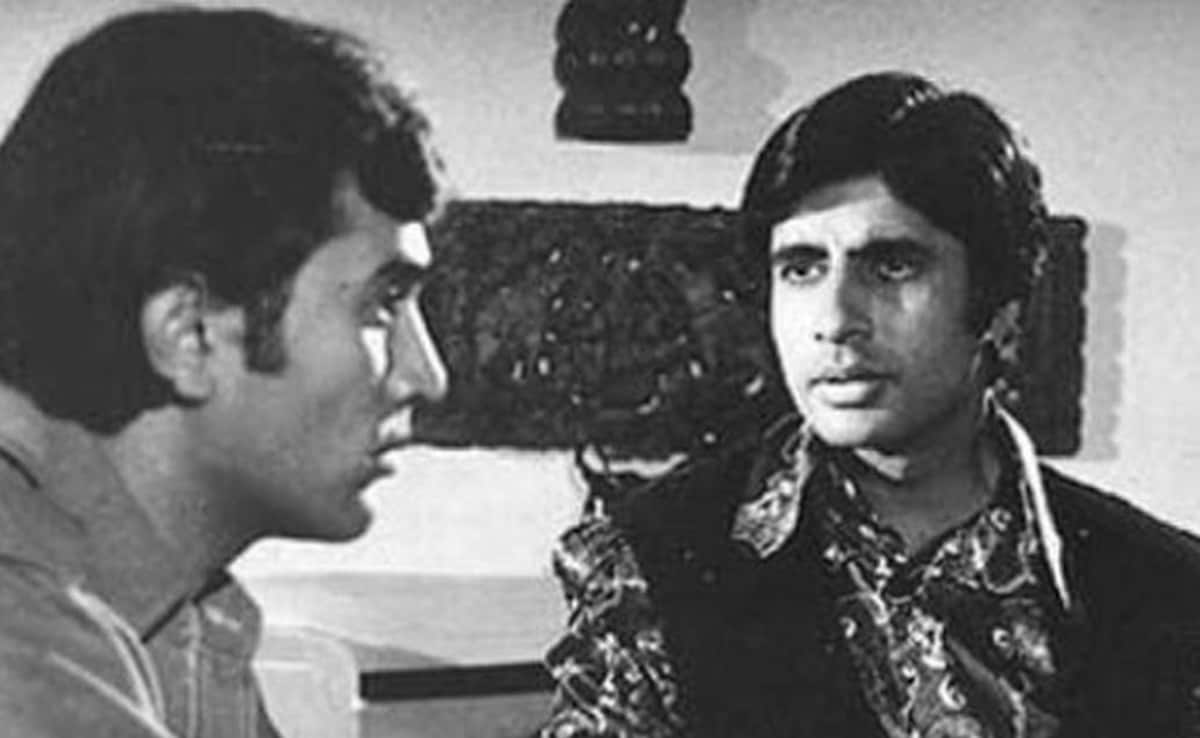
Set against the clashes between mill owners and workers' unions in the 1970s, the film tells the story of two best friends who land on opposite sides of the conflict. Rajesh Khanna plays Somu, a poor, gentle idealist, while Amitabh Bachchan is Vicky, the flamboyant heir to a mill owner. After Vicky's ego is hurt in a clash with workers, Somu joins the mill as a labourer to avenge him. But living among the workers changes his sympathies. Branded a management stooge, Somu is killed. In a shocking twist, Vicky takes the blame and goes to jail.
Recommended
Unlike Anand, this time the two actors had their roles switched, temperament-wise. Hrishikesh Mukherjee had said, 'I cast Rajesh Khanna and Amitabh again, but this time in reversed roles. I wanted Amitabh to play the extrovert, while Kaka an introvert,' said Hrishikesh Mukherjee.
The Battle Over The Ending
It was the climax of Namak Haraam that became the flashpoint of conflict. Amitabh Bachchan had completed his solo portions back in 1972, while Rajesh Khanna was tied up with a string of films. But by 1973, everything had changed. Zanjeer had unleashed the "angry young man", and Amitabh was now the hot, new star. Now they were shooting their major scenes together, and the showdown now shifted to Namak Haraam's climax.
Hrishikesh Mukherjee revealed in an interview that during the entire shooting of Namak Haraam, both the actors had no clue about the climax. If anyone knew about the climax, it was the film's co-writer and dialogue writer, Gulzar. Hrishikesh wanted to keep the climax a secret from both the actors.
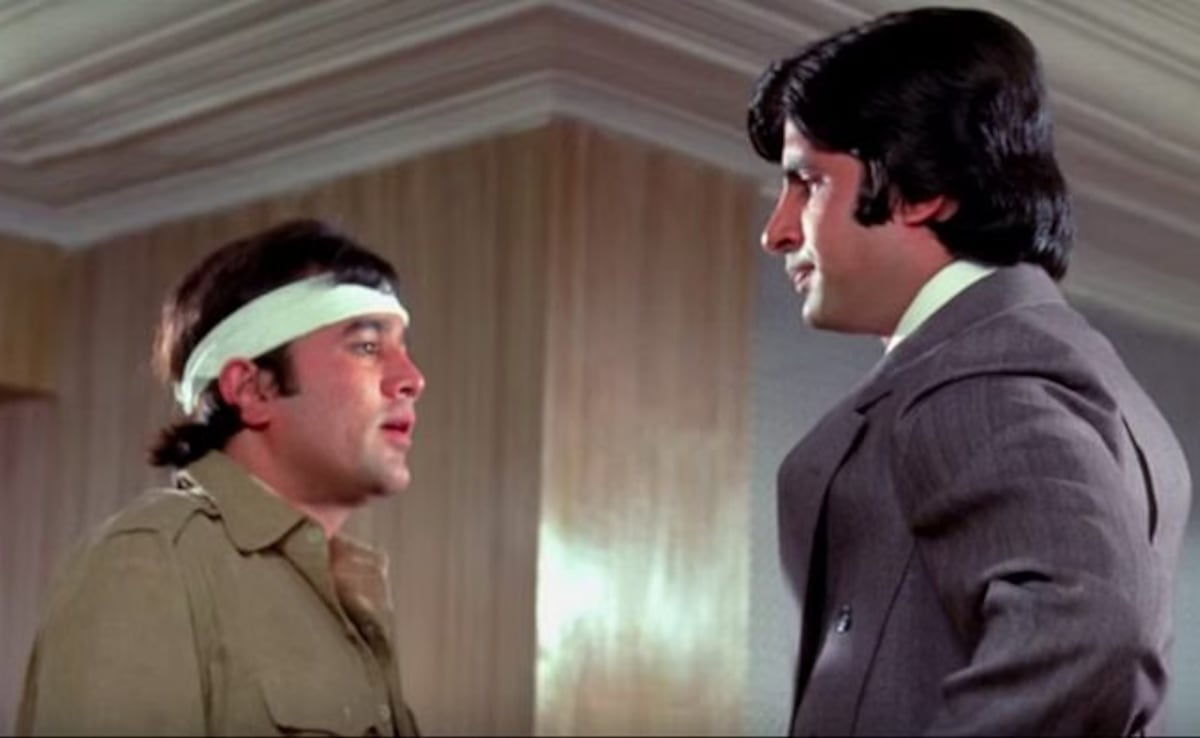
According to the original climax of the film, as a departure from the Becket storyline, Amitabh's character had to die. When Rajesh Khanna got to know about this, he was not happy. Everyone knew about Rajesh Khanna's obsession with dying characters. He believed his most memorable films were those in which he died on screen. In Namak Haraam, he insisted the death scene had to be his.
Rajesh Khanna became adamant and told Hrishikesh that, being the bigger star, he should get the death scene. To make his point, he reportedly went so far as to place a garland of flowers on his own photograph as his way of insisting on a grand cinematic death. This was the final signal for Hrishikesh Mukherjee that the death scene would go to the hero of the film, Rajesh Khanna. Talking about Namak Haraam, Gulzar said, 'In Namak Haraam we had to change the end because Hrishida had promised Rajesh Khanna the death scene.'
Amitabh Bachchan was extremely upset with this decision. The script was changed on the insistence of Rajesh Khanna, and this was hidden from Amitabh till the day of the shooting. He was terribly disappointed at the 'betrayal' of the director. Hrishikesh Mukherjee said in an interview, 'In Hindi films, the one who dies is considered a hero, so both were keen on being heroic. It was only on the day of the shooting that Amitabh finally learnt the truth. He was crestfallen! He was so hurt that he didn't speak to me for several days. He felt I had betrayed him.'
A veteran filmmaker told me that the issue apparently created such a rift between Amitabh and Rajesh Khanna that they never worked together again after this film. Prashant Roy, who worked in Rajesh Khanna's office and witnessed countless parties at his legendary bungalow Aashirwad, remembered the story differently. Prashant had told me, 'Those days Kakaji used be very angry with Amitabh Bachchan. He used to tell his close friends that Hrishikesh Mukherjee is his favourite director, but Amitabh has filled his ears. Kakaji used to say that during the entire shooting of Namak Haraam, Amitabh played dirty politics with him. During my twenty years working with Kakaji, I never saw Amitabh coming to Aashirwad. Earlier Hrishikesh Mukherjee used to come quite often, but after Namak Haraam, even his visits were rare.' However, it's worth noting that Amitabh Bachchan has never spoken a word against Rajesh Khanna on record either about Namak Haraam or any other problem. Even after Rajesh Khanna's death, whatever he said to the media or wrote on his blog was in absolute praise of Rajesh Khanna and his incredible superstardom.
But the death scene that Rajesh Khanna had fought so hard for became his undoing.
Rajesh Khanna's character Somu dies too early in the build-up to the climax. Unlike the unforgettable farewells of Anand or Safar, there is no grand 'death scene' here. Just a sudden, almost anticlimactic end under a truck. Before the audience can even register the loss, the screen is overtaken by Amitabh Bachchan, and perhaps the film too.
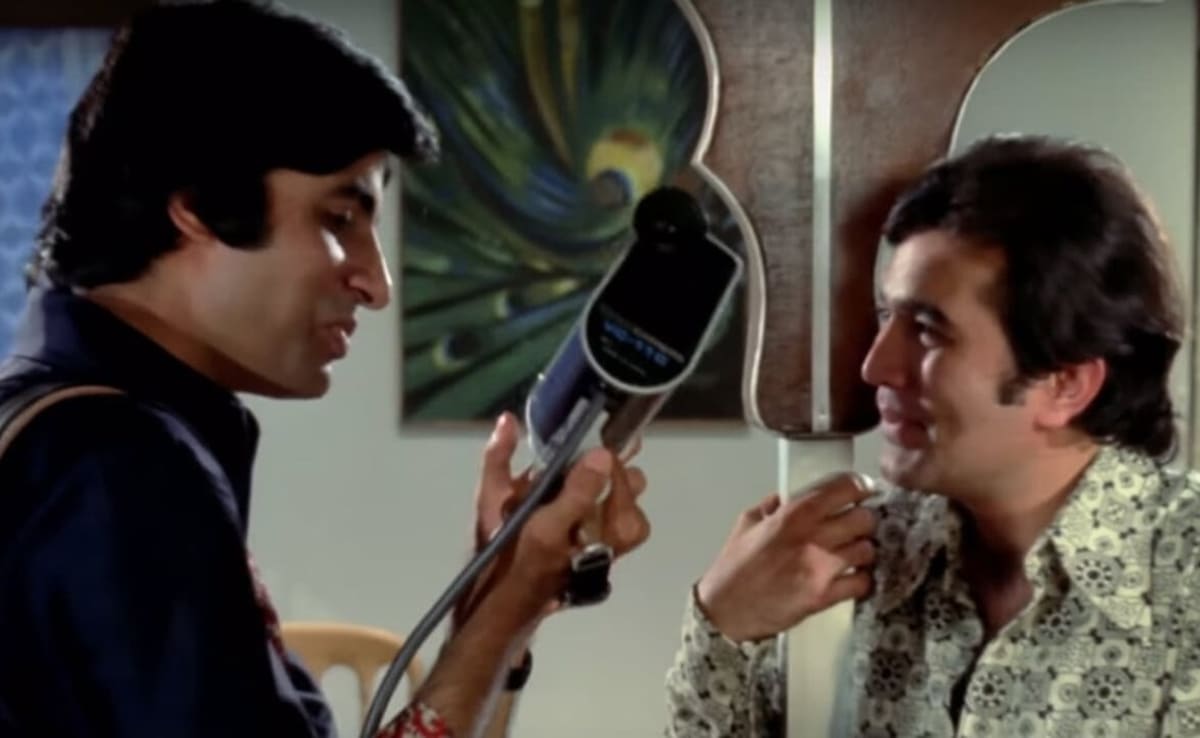
Namak Haraam was released in November 1973. Critics praised Rajesh Khanna's restrained performance, but it was Amitabh Bachchan who emerged as the revelation. The same anger and intensity that had exploded in Zanjeer now burned through Namak Haraam. Veteran sound recordist Mangesh Desai watched the film some time after its release. He called up Amitabh immediately and said that he was brilliant in the film. Amitabh, who was upset with Hrishikesh Mukherjee over the film, was surprised to hear this. He had felt that he had screamed too much in the last scene.
Amitabh had no clue that it was his loud anger that had the audiences spellbound. Especially the scene when the mill workers beat up his close friend, Somu. He goes to their basti and shouts in anger, 'Hai kisi maa ke laal mei himmat jo mere saamne aaye?' Actor and film- maker Sachin Pilgaonkar, who has seen the many changing faces of the film industry, told me, 'I was in a theatre watching Namak Haraam. The moment that scene came where Amitabh Bachchan challenges and shouts in anger, the entire theatre echoed with applause. Every single person was clapping. This was strange. The hero of the film was Rajesh Khanna, but people were cheering for Amitabh Bachchan. It meant only one thing: that the times were changing.'
For this role Amitabh won the Best Supporting Actor Filmfare Award. He had even been nominated in the Best Actor category for his film Zanjeer. But the award went to Rishi Kapoor for his debut in Bobby. Rajesh Khanna did not win any awards that year.
Namak Haraam was actually the first film that saw a shift in the balance of power within the film industry in favour of Amitabh Bachchan. Even Rajesh Khanna had predicted the same after watching the trial show of the film. Years later he said in an interview, 'When I saw Namak Haraam at a trial at Liberty Cinema, I knew my time was up. I told Hrishida, "Here is the superstar of tomorrow."'
With R.D. Burman's music, Anand Bakshi's lyrics, and Gulzar's dialogues, Namak Haraam gave timeless Kishore Kumar melodies, most memorably the friendship anthem Diye jalte hain, along with Nadiya se dariya, Main shayar badnaam and that caustic electoral song Wo jhootha hai vote na usko dena.A box-office hit of 1973, it had Rekha as the female lead, though it is not really counted as an Amitabh-Rekha film, since she was paired with Rajesh Khanna while Amitabh was opposite Simi Grewal. The Amitabh-Rekha screen pairing gained prominence two years later, with Do Anjaane in 1976. Another standout performance In Namak Haraam, Raza Murad played the young poet Alam who gave voice to the anger and aspirations of the mill workers.
The Shifting Tides Of Fame... And Hairstyles
When the shooting for Namak Haraam had begun, Rajesh Khanna was the superstar, and Amitabh was considered a flop actor. Since the producers couldn't get Rajesh's dates easily, they decided to go ahead with Amitabh's scenes. So most of Amitabh's scenes were shot first. These rushes were shown to a group of distributors. The distributors got the impression that Amitabh was the real hero of the film and that Rajesh Khanna was doing a guest appearance. They were uncertain about the project and reluctant to buy the film of this flop actor.
Since Hrishikesh Mukherjee was a senior film-maker with a fantastic track record, the distributors were wary of rejecting the film outright. Nevertheless, many of them voiced their concerns about Amitabh by finding fault with his performance. Finally, some distributors targeted his 'hairstyle that covered his ears' and said, 'Your hero looks like an ape. Do tell him to have a good haircut so that we can see whether he has ears or not!' Everyone in the group laughed at this comment.
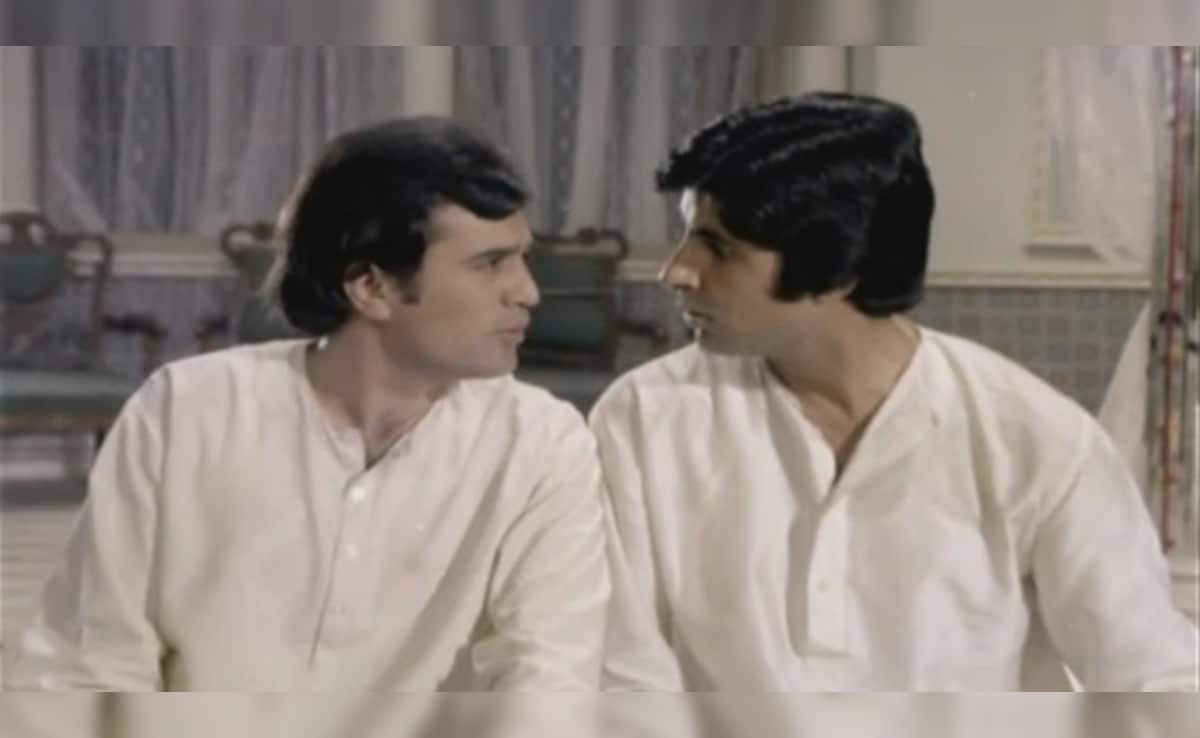
A few months after this event, Prakash Mehra's Zanjeer was released, and Amitabh created history, emerging as the new hero of the youth. This was also the time when Rajesh Khanna's career was going through a lean phase, with five of his big films not working their magic. At this stage, Namak Haraam was still being shot.
Success changes everything. Post the success of Zanjeer, the same distributors called to say that Amitabh's role should be increased and some angry scenes should be added to the film. They even demanded that Amitabh should be given equal footage in the posters and publicity of the film. During the planning of Namak Haraam, Amitabh was just a co-actor. But by the time the film was released, Amitabh was on almost equal footing.
Furthermore, Amitabh's 'hairstyle that covered his ears' became a rage. It was a fashion statement now followed by millions across the country. While a lot has been said and written about this shift in the balance of stardom, the most significant marker of this change came from the establishments of Bombay's barbers. Across the city, their boards now reflected a new entry that marked the changing winds of time:
Rajesh Khanna Haircut - Rs 2/-
Amitabh Bachchan Haircut - Rs 3.50/-
-
Opinion | Guns To Rallies, How 'Drug Money' Is Fuelling Khalistani Extremism In Canada
Since 2007, more than 200 gang-related homicides in British Columbia alone have been linked to rival Punjabi-Canadian gangs fighting for control of the lucrative cross-border drug trade
-
Opinion | Scindia's Ghost Is Haunting Congress Again - This Time In Karnataka
As Deputy Chief Minister DK Shivakumar stakes his claim to the top post, the party's high command is walking a tightrope, acutely aware that one misstep could lead to a repeat of the catastrophic loss it suffered in Madhya Pradesh in 2020.
-
Opinion | Dharmendra: The 'Pehelwan' Who Was A Poet
Dharmendra described himself as a 'mitti ka beta' (son of the soil). But some of his most memorable roles were those of a man of words, a teacher or a poet.
-
Opinion | The Imran Khan I Know - By Shashi Tharoor
"I have known Imran Khan in three distinct phases of his life. Our first meeting was in New York, during my UN years. His sister, a UN colleague, hosted a gathering, and Imran, then a cricket celebrity, was present. I was struck by his warmth."
-
Opinion | Why A US Report Mentioning 'Pak Success' Has India Bristling
Just one sentence in a report of a US Congressional Commission has got a lot of knickers in a twist in India. The sentence in the 675-page report reads: "Pakistan's military success over India in its four-day clash showcased Chinese weaponry."
-
Opinion | On A Friend's Death And Dying With Dignity - By Shashi Tharoor
Last Wednesday, I received an email that turned me inside out. It came from a friend of thirty-five years. His message began warmly, praising my latest essay, but then turned devastating. "If all goes well, by next Monday I will be no more," he wrote.
-
Opinion | Why Trump And Mamdani May Not Be That Different, After All
Both Trump and Mamdani seem to be offering an emotional appeal that targets the same problem: an unaffordable America that has alienated its large majority.
-
Opinion | The Reel Is Over, But The Light Remains: Remembering Dharmendra
From the moment he strode onto the silver screen in the early 1960s, a whirlwind of raw, rustic charm, Dharmendra was an instant phenomenon. He embodied the soul of a transitioning India: tough yet tender, deeply flawed yet utterly lovable.
-
Exclusive - American Mercenaries In Gaza: Who Controls Them, What They Do
This second part of NDTV's exclusive series examines the model of security governance implemented by a mercenary group contracted to guard aid sites in Gaza.
-
Exclusive: Inside An American Mercenary Group Accused Of War Crimes In Gaza
For nearly a year, UG Solutions has become a fixture at at least four GHF distribution sites. Their presence has raised questions: Who regulates them? What are they authorised to do?
-
News Updates
-
Featured
-
More Links
-
Follow Us On












